As an insurance professional, your brand is critical. Branding sets the first impression with customers, helping to tell your company’s story and what that company stands for. A brand consists of interconnected components, all working together to give your business an identity that resonates with existing and potential clients. Having a brand is only one part of the equation, however – a robust insurance brand strategy helps support business growth. Whether you are just starting your own insurance agency or seeking expansion, creating and developing an insurance brand strategy gives you the means to stand out from your competitors.
Table of Contents
Why Branding Matters
Branding is the most fundamental of marketing efforts. It is the visual and naming attributes that make a company easily identifiable within its industry, giving it the ability to stand out from others in the same industry space.
For insurance businesses, a brand provides significant benefits:
- A brand makes a memorable impression, not only on potential new customers, but also for existing customers.
- The brand serves to distinguish your company across marketing channels.
- A brand conveys the message that your offerings are the better choice as compared to your competitors.
- A good brand provides a true and clear representation of your company and the way it wishes to be perceived in its market.
Ultimately, a brand strategy drives business growth through increasing awareness. It is clear that with these benefits in mind, an insurance brand strategy that leverages the power of branding is a mission-critical undertaking.
Step One: Defining Your Company Positioning
The first part of developing an insurance brand strategy is to take a hard look at what your company is and how it is different from competitors in the same space. To facilitate this discovery, consider:
- The specific purpose or purposes of your business.
- What you do that is different or better than your competitors; how do your products and services improve the lives and stability of your customers.
- What makes your business unique in terms of its experience, product/services offerings, and origin.
Think of your positioning as a mission statement – it should be concise and should reveal what it is that your company does best. Once your position is defined, you are ready to take the next step.
Step Two: Audience Research
At its core, insurance brand strategy is designed to create an environment that engages with target audiences. Do you know which audience that is? If your agency does not have a clear picture of the desired audience, it is time to delve into audience research.
First, you must identify what specific preferences and needs an audience has. Audiences may be influenced by location, demographic features, lifestyles, and income levels. For insurance companies, tailoring your marketing efforts to reach a certain audience hinges on the ability to recognize those unique attributes, then delivering a branding message that resonates. Ideas for audience research include:
- Sending customer satisfaction surveys to existing customers.
- Hosting informal online or in-person meeting groups to gauge interest from attendees.
- Using datasets and analysis of that data to identify potential customer bases.
- Utilizing the data tools social media platforms such as Facebook, Twitter, and YouTube provide to get a feel for your followers. These platforms offer a host of information on the preferences and user demographics of a given audience.
Step Three: Developing Consistency in Messaging
Your brand follows you wherever your company goes, and from a marketing perspective, there are many potential avenues to explore. From print advertising to digital marketing, social media marketing, and television/radio, your brand’s message must be consistent. To develop that consistency in messaging, identify the tone or voice that best resonates with your audience. Through market research, you may discover that a particular voice drives engagement and direct communication with an ideal audience. Your tone may be informative, entertaining, or humorous; each influences audience perception and can help differentiate you from competitors within your space. Once the ideal tone is developed, remember to use it in every part of your marketing efforts, including your website and social media channels.
Step Four: Brand Identity with a Visual Punch
Brands rely on visual cues to stand out and to resonate with audiences. Think of the most prominent consumer brands and you will discover that each has a very recognizable visual look and feel. The visual elements in your brand must not only relate directly to your company, but they must be consistent. These visual elements may include:
- Company logos
- Taglines or mottos
- Trade dress – the colors and stylistic elements that distinguish your business
- Imagery
- Design cues in print and on the web
The goal of developing a strong visual identity is to create a unique and easily-recognizable look for your company. Once that is achieved, consistency is critical. Just like in messaging, use your visual identity across marketing channels in a consistent way.
Step Five: Exploring New Branding Channels
Many insurance firms rely on traditional print and television or radio advertising. These companies may not yet have made the “digital leap” into online marketing. Others may have dipped their toes into the digital marketing space, but there is more to explore. To expand your insurance brand strategy efforts, it is a smart practice to leverage every available marketing channel. Some options include:
- Claiming a listing on Google My Business.
- Establishing profiles on social media.
- Developing landing pages to direct potential customers to your website.
- Starting an agency blog or online newsletter.
- Submit your company’s information to industry directories.
Because insurance brand strategy is so important, be sure to apply consistent messaging and visual identity to each of the new channels you leverage. The more channels you can exploit, the larger your potential pool of new customers. A combination of on- and off-line marketing pays big dividends, allowing your company to reach broad audiences. This in turn facilitates business growth, positioning your firm for continued success well into the future.
About Neilson Marketing Services
Since 1988, Neilson Marketing Services has been implementing innovative marketing solutions and strategies for our clients in all areas of marketing. Contact us today at (866) 816-1849 to put our talent, expertise, and vast resources to work for you. Let’s make things happen, together!
